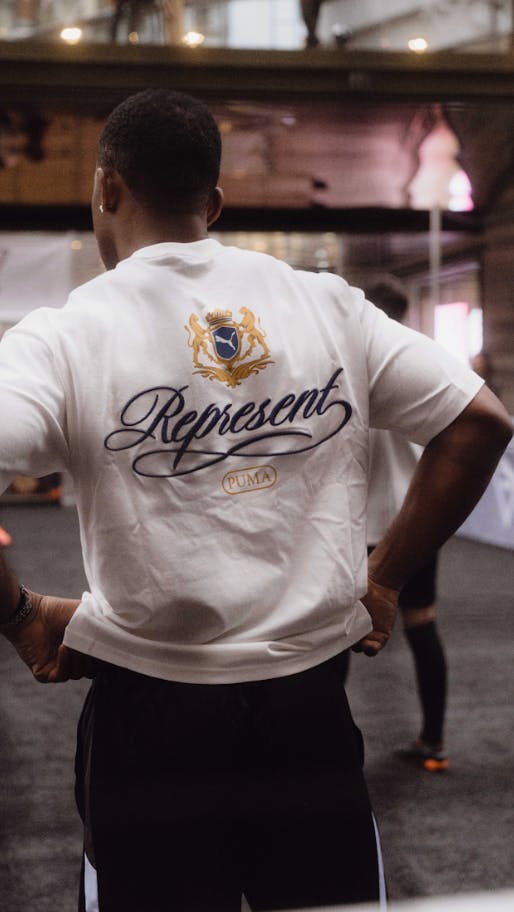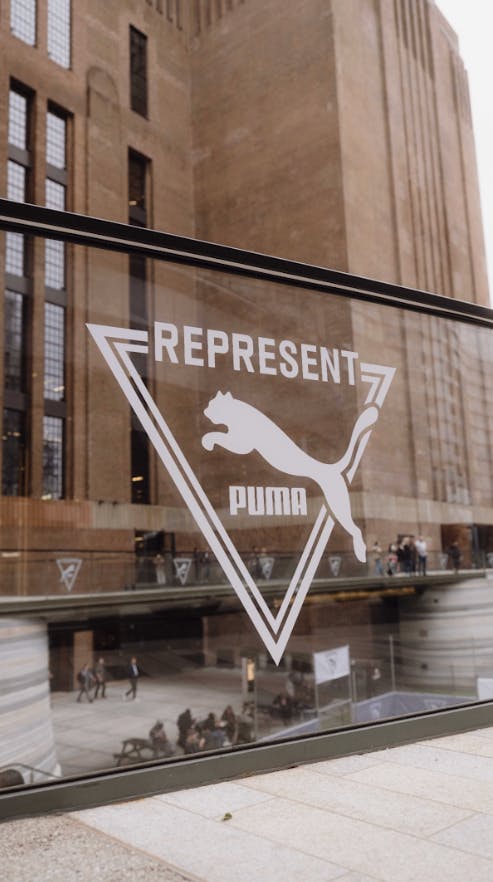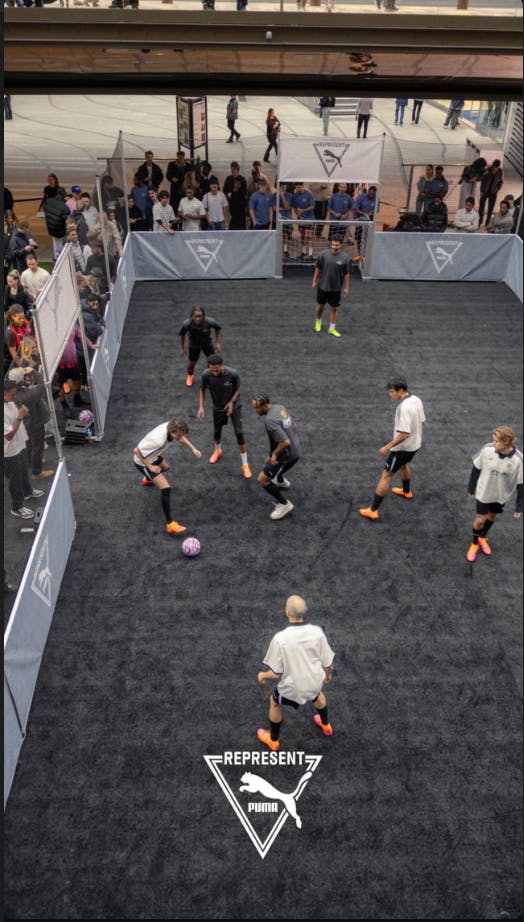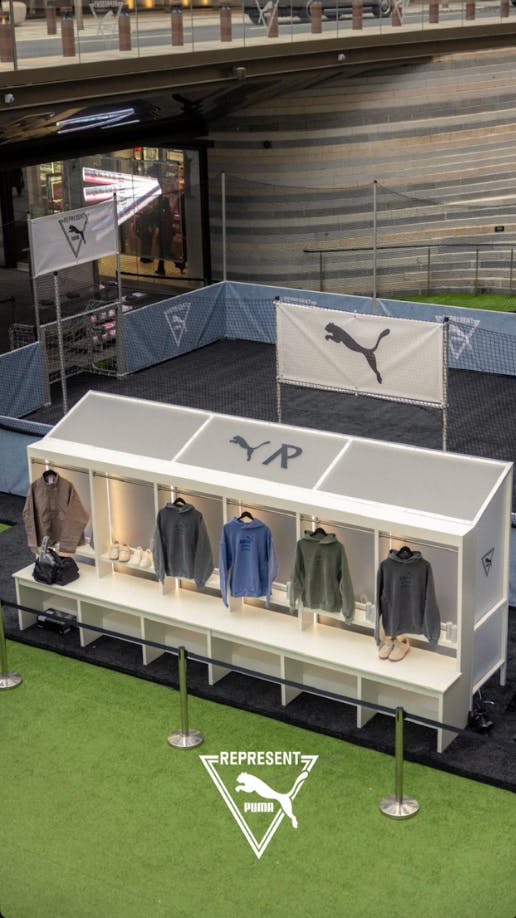Loading...
Loading...
What is experiential space and why it matters for brands
03 Nov 2025
![[object Object] image](/_next/image?url=https%3A%2F%2Fimages.prismic.io%2Ftestrepositor%2FaQi9_7pReVYa39HZ_unnamed.png%3Fauto%3Dformat%2Ccompress&w=3840&q=75)
In a world saturated with digital advertising, consumers are craving something real. They want experiences they can touch, feel, and remember - not just another scroll past a screen. That’s where experiential spaces come in. These are physical environments designed for brand activations, live experiences, and consumer engagement.
Across the UK, brands are swapping static ads for experiential marketing spaces that let them connect directly with audiences - from immersive pop-ups in Covent Garden to sampling stands in major train stations. The result? Deeper emotional connections, higher engagement, and a tangible boost in brand affinity.
In this article, we’ll explore what experiential space really means, why it’s reshaping brand marketing, and how you can find the perfect location for your next campaign.
An experiential space is a physical location where a brand creates an interactive, memorable encounter with its audience. Unlike a traditional venue or retail unit, it’s designed around experience - not just function.
Think of a pop-up retail space that transforms into a sensory playground for a new fragrance launch, or a brand activation space in a busy concourse that invites commuters to taste, play, and share.
These spaces allow brands to bring their stories to life through experiential marketing - a discipline focused on live, immersive interactions that leave a lasting impression. Whether it’s a temporary installation, outdoor stand, or mobile activation, the goal remains the same: to create a brand experience that feels authentic, surprising, and unforgettable.
While traditional event venues are typically used for functions, conferences, or private gatherings, experiential spaces are purpose-built (or repurposed) to engage the public.
A hotel ballroom might host a corporate event - but an experiential venue could host a hands-on tech demo where consumers test a new gadget in real-time.
The key difference is intent and flexibility:
• Traditional venues focus on logistics and hospitality.
• Experiential marketing spaces prioritise creativity, visibility, and interaction.
These spaces are often found in high-footfall areas such as shopping centres, train stations, and high streets - anywhere the brand can meet audiences organically. They’re designed to blur the line between retail, art, and experience, transforming everyday spaces into storytelling platforms.

Nike x LEGO Play Arena at Westfield London
The short answer: because experience drives engagement.
As digital advertising becomes more competitive - and consumers more resistant to it - brands are turning to experiential marketing UK to cut through the noise. Studies consistently show that live brand activations generate stronger recall, higher trust, and greater emotional impact than passive media.
Experiential activations are also highly shareable. A beautifully designed installation in King’s Cross or a creative sampling campaign in Westfield London can quickly spread across social platforms, amplifying reach far beyond the physical audience.
In 2025, experiential marketing isn’t just a trend - it’s a strategic investment in real-world brand building.
The UK offers a vast range of experiential space options - each suited to different types of campaigns. Here are some of the most common categories:
Perfect for product launches, seasonal activations, and direct-to-consumer experiences. Think Oxford Street, Westfield, or Boxpark.
High-traffic areas ideal for sampling campaigns, tech demos, or awareness activations. Locations like St Pancras International and Waterloo Station offer unbeatable exposure.
Spaces in destinations such as Bluewater, Bullring, or Manchester Arndale allow brands to capture shoppers in a purchasing mindset.
From Trafalgar Square to South Bank, outdoor sites deliver impact for large-scale experiences, installations, or brand takeovers.
For more creative storytelling, brands often use galleries, markets, or community halls to stage localised or art-led activations.
Each type of space caters to different objectives - from mass reach to hyper-local engagement.
A good experiential space should do more than look the part - it must work strategically for the brand’s objectives.
Here’s what to look for:
• High footfall and visibility – The more eyes on your activation, the better your ROI.
• Flexible layout – Space to build, brand, and move freely.
• Demographic alignment – Your target audience should already frequent the area.
• Accessibility – Easy logistics for set-up, permits, and utilities.
• Atmosphere – The location should complement the campaign’s tone - whether luxury, playful, or disruptive.
Platforms like lo:live help marketers evaluate these criteria easily, offering filters for capacity, audience type, and location style to find the perfect fit.
People remember how brands make them feel - not what they’re told. Experiential spaces turn this principle into practice by engaging multiple senses.
When consumers interact with a product in a physical setting - tasting, trying, or co-creating - it forms a deeper emotional connection. This leads to higher loyalty and word-of-mouth advocacy.
For example, when Coca-Cola launched “Share a Coke” sampling booths in UK shopping centres, they weren’t just giving away drinks - they were creating personalised experiences that inspired social sharing and emotional resonance.
In essence, experiential spaces transform audiences into participants, not spectators.
Some activations thrive in these environments more than others. Top-performing examples include:
• Product Sampling Campaigns – Ideal for FMCG and beverage brands in high-footfall areas.
• Pop-Up Shops & Retail Takeovers – For fashion, beauty, and tech brands wanting to launch or test new products.
• Immersive Installations – Think luxury, art, or lifestyle brands creating Instagrammable experiences.
• Mobile Brand Tours – Using modular setups that move across multiple cities.
• Cause-Driven or Purpose-Led Campaigns – Engaging the public through storytelling and participation.
The best experiential campaigns align creative concept, audience behaviour, and space selection seamlessly.
Measuring experiential ROI can seem intangible - but modern tools make it highly trackable.
Common metrics include:
• Footfall and dwell time (via sensors or staff counts)
• Sampling volumes or product redemptions
• Social engagement (hashtags, mentions, shares)
• Data capture (email sign-ups, app downloads, QR scans)
• Brand sentiment (pre- and post-campaign surveys)
Many brands now combine digital tracking with on-site analytics to quantify both reach and emotional impact. For instance, a brand activation might use NFC wristbands or QR codes to track engagement and drive follow-up conversions online.
Timed to coincide with the 2025 London Marathon, Adidas launched its new Adizero Adios Pro Evo 2 through a city-wide experiential campaign that celebrated speed, culture, and community. Spanning four days, the activation transformed multiple London landmarks - from St Martin-in-the-Fields to Holborn’s Kingsway Tunnel - into immersive brand experiences that brought the spirit of Adizero to life.
The wider activation included live performances from artists such as Giggs and Overmono, panel discussions with cultural leaders, and community shake-out runs across the capital. The main pop-up at St Martin-in-the-Fields served as the creative hub - a multi-sensory experiential space blending architectural design, light, and motion.

Adidas Adizero at St Martin-in-the-Fields
To celebrate its growing presence in the UK, Blank Street Coffee launched an experiential pop-up - The Post Room - on Greek Street, Soho. Created in partnership with InPost, the activation invited Londoners to pause, connect, and send something thoughtful - perfectly aligning with both brands’ missions to simplify daily rituals.
The café-style pop-up blended hospitality, creativity, and storytelling. Visitors could enjoy Blank Street’s signature coffee while personalising and sending complimentary postcards through on-site InPost lockers, transforming the simple act of mailing into a mindful, shared experience. The space also featured interactive installations, photo moments, and a curated retail corner with limited-edition merchandise - all designed to evoke warmth, connection, and brand authenticity.
PUMA and Represent joined forces to bring a new wave of football culture to Battersea Power Station with a two-day experiential takeover celebrating their latest collaboration. Malaysia Square was transformed into a bespoke PUMA x Represent football pitch, where mixed-ability teams competed in 4-a-side matches inspired by British terrace culture. Alongside the action, visitors explored the new collection through live showcases, giveaways, and special guest appearances - turning one of London’s most recognisable landmarks into a vibrant celebration of style, sport, and community.




Finding the right experiential space UK used to mean endless calls and negotiations. Now, it’s effortless with Location Live - the UK’s leading platform for brand activation venues and promotional space bookings.
With Location Live, you can:
• Discover and compare thousands of experiential and promotional spaces across the UK.
• Filter by footfall, demographics, style, or location type - from shopping centres to outdoor landmarks.
• Access exclusive brand activation venues and pop-up retail spaces unavailable elsewhere.
• Book directly online or connect with our expert team for tailored campaign support.
Whether you’re launching a national roadshow, hosting a one-off pop-up, or planning an interactive brand experience, Location Live simplifies every step - from discovery to delivery.
As marketing continues to evolve, experiential spaces remain one of the most powerful tools for building genuine consumer relationships. They bridge the digital and physical worlds, offering something audiences can’t scroll past - a real, emotional connection.
From sampling campaigns in busy train stations to immersive pop-ups in luxury retail hubs, these spaces bring brands to life in the most human way possible.
In 2025, brands that embrace experiential marketing will stand out not just for what they sell, but for how they make people feel.
With Location Live, finding the perfect space to do just that has never been easier. Explore, compare, and book the UK’s best experiential venues today - and turn your next campaign into an unforgettable experience.